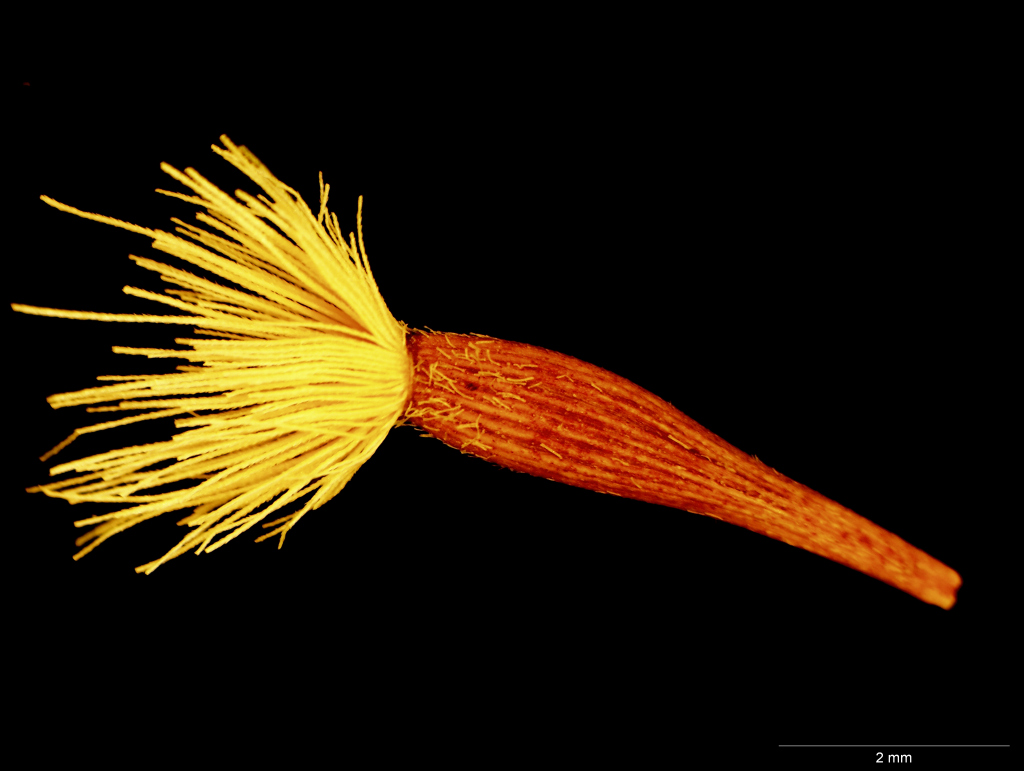Vittadinia condyloides
N.T.Burb.Perennial herb or subshrub, to c. 20 cm high, little-branched above base, pubescent with spreading, rather coarse broad-based eglandular hairs and sessile or shortly stalked glands. Leaves oblanceolate to narrowly obovate, 5–18 mm long, 1.5–5 mm wide, conduplicate, entire or, rarely, with a pair of small teeth above midway; apex obtuse, recurved. Involucral bracts linear, the longest 7–9.5 mm long; ray florets mauve or pink, ligules 2–3 mm long. Cypsela narrowly cuneate, 4–7 mm long, flattened, marginal ribs slightly thickened, with few short, glandular (and sometimes longer eglandular) hairs, shorter than those of the faces, facial ribs continuing to summit, faces with scattered to rather dense, inclined, eglandular hairs that are blunt to rounded and minutely notched, glands moderately abundant; pappus bristles barbellate, the longest 5.5–8 mm long. Flowers mostly Oct.–Dec.
LoM, MuM, Wim, VRiv, MSB, RobP, MuF, Gold, GGr. Also SA, NSW. Uncommon in Victoria, confined to the north-west, usually occurring in grassland and grassy woodlands on better mallee soils and loams of the Riverina.
Walsh, N.G. (1999). Vittadinia. In: Walsh, N.G.; Entwisle, T.J., Flora of Victoria Vol. 4, Cornaceae to Asteraceae, pp. 869–877. Inkata Press, Melbourne.
 Spinning
Spinning

